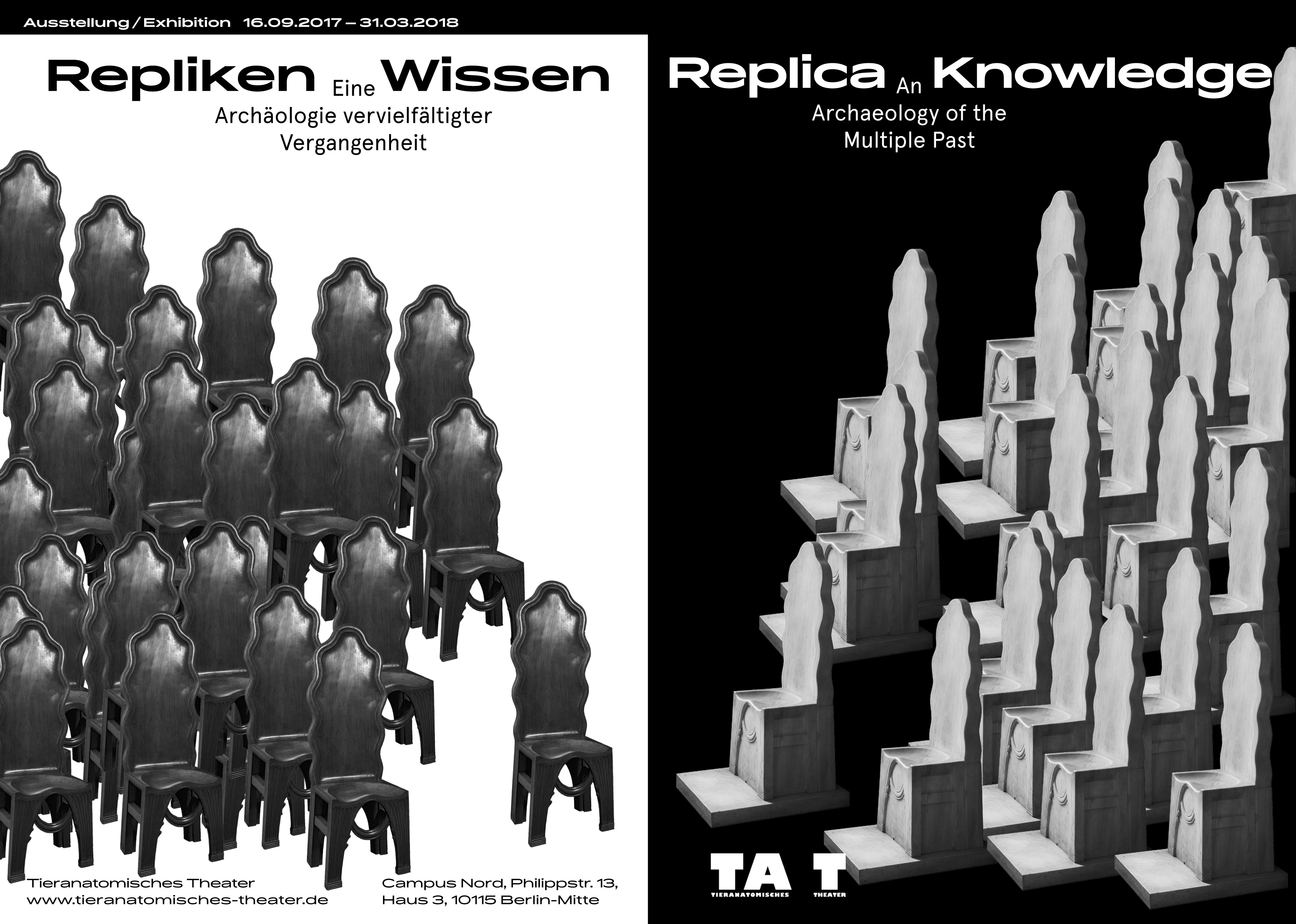Public Engagement
ENCYCLOPAEDIA ENTRIES
EXHIBITIONS ORGANISED
Archaeology
Simandiraki-Grimshaw A., Sattler F., 2017, "Replica Knowledge: An Archaeology of the Multiple Past", exhibition at the Tieranatomisches Theater, Humboldt University, Berlin, Germany, 15/9/2017-31/3/2018,Tuesday-Saturday 14.00-18.00. Opening on 15/9/2017, 19.00.

More than copies of originals - a research project and an exhibition investigate the worldwide distribution of archaeological replicas and their multiple object biographies.
Why do snake goddesses reside in
Berlin, Oxford, Cambridge, Heidelberg and Paris? How did
the throne of King Minos appear in the International Criminal
Court in The Hague and what role does it play in the legendary
science fiction series "Dr. Who "? And when was the Cup of Nestor
last seen on the big screen?
The exhibition
REPLICA KNOWLEDGE - An Archeology of the Multiple Past at
the Tieranatomisches Theater traced such copies of
archaeological finds. Their biographies lead to collections
of museums and universities, legal palaces, luxury steamers,
action films and contemporary art. The replicas’ manifold
interpretations and uses today and in the past show that history is
continually being constructed; between the
fragmentary originals and (re)construction, between truth
and myth.
REPLICA KNOWLEDGE presented copies of archaeological objects from the Minoan and Mycenaean civilizations of the Greek Bronze Age. Visitors could go on a journey through a variety of possible pasts: different copies and the knowledge they generate make the story of an original appear as a kaleidoscope. They not only represent this "original", but can also influence its meaning and even its reconstruction or restoration. The exhibition conveyed stories of truth and myth and their motivations in artistic and museum formats of presentation. How did different forms and motifs of this discovery arise? What processes allow certain objects to be elevated to icons that inspire science, art and popular culture? The exhibition brought together various actors of archeology, history and (re)production of replicas. For example, in a "Replica Maker Space", techniques, materials, and manufacturing contexts of archaeological replicas became tangible, revealing the possibilities of past and current uses. Another example was the work of illustrator Jan Stöwe, who was commissioned for an experimental collaboration in the form of a large-scale installation. In this, he explored, interpreted and presented the history of the replica of the ’Throne of King Minos’ from Knossos. This replica was installed at the International Court of Justice in 1913 and reveals a multitude of interpretations, ranging from ancient myths to political agendas.
At the opening of the exhibition, the archaeologist Jerolyn E. Morrison gave a Bronze Age cooking performance in replicas of Minoan pots. As the exhibition has now finished, there will soon be an extensive publication by K. Verlag, edited by Anna Simandiraki-Grimshaw, Felix Sattler and Konrad Angermüller.
PUBLIC LECTURES
SCHOOL ENGAGEMENT
Archaeology
Culture
Education
MEDIA AND PUBLICITY
Archaeology/Museology
International Education
VOLUNTEERING
Last updated 06/11/2020
<script src="http://www.google-analytics.com/urchin.js" type="text/javascript">
</script>
<script type="text/javascript">
_uacct = "UA-1779647-1";
urchinTracker();
</script>